The Publication Facts Label
Explaining the Facts
The Publication Facts Label (PFL), developed by the Public Knowledge Project at Simon Fraser University, seeks to help readers learn more about an article’s and journal’s adherence to the scholarly standards that set research apart from other sources of knowledge.
In its current form, the label is only available for journals that use Open Journal Systems as their publishing platform.
The intent, however, is to make the label available to the scholarly publishing industry for widespread adoption as a strategy for improving scientific literacy and journal integrity among all journals.
A Label of Journal Integrity
The label appears on all of the journal’s research articles, attesting to their adherence to scholarly publishing standards.
To uphold the integrity of label, all of its data comes directly from the journal’s publishing platform (without journal editor or publisher involvement).
Editors, board members, authors, and reviewers are asked to verify their identities with the scholarly publishing organization ORCID, which also enables you to see their profiles by clicking on the green ORCID icon after their name.

Other articles
The column of numbers on the right-hand side of the label under “other articles” presents the averages from articles published in this and other journals that employ the PFL.
Once journals begin to install and activate the Publication Facts Label plugin — which enables PKP to collect and compile the PFL data that appears under “other articles” or “other journals” in the PFL — a link will be provided leading to a list of the participating journals.
Until there is a sufficient number of journals using the PFL, the averages shown on the label will be from across the disciplines and thus will not represent the differences that sometimes set one discipline apart from another.
Other journals
The column of numbers on the right-hand side of the label also presents average data from “other journals” employing the PFL. See the previous point above on the journals participating in the PFL.
The Label’s Use of N/A
Note: N/A (“not available”) is used on the label when a publication fact was introduced after an earlier article was published (such as asking authors to sign “competing interest” statement) or is not available with this version of the publishing platform. As well, the label may not be applied to a journal’s earlier articles for technical reasons.
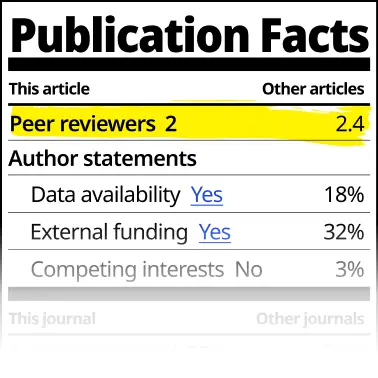
Peer reviewers
The journal editors invite researchers with the relevant expertise to review the article, evaluating it, as well as suggesting improvements to, the article’s quality, methods, completeness, clarity, ethics, and other aspects, for the consideration of the editors prior to their decision about publication.
Reviewers are typically asked to recommend acceptance, revisions, or rejection, while their identities are commonly kept from authors (and vice versa).
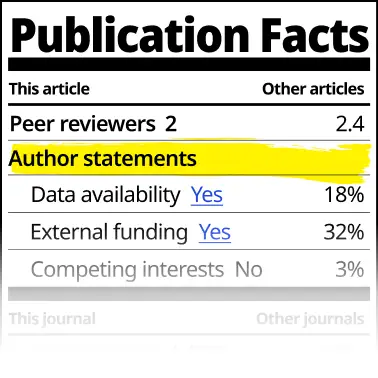
Author statements
On submitting an article, authors are asked to declare competing interests, data availability, and external funding sources.
Competing interests
Authors are asked if their study involves potential competing interests for them (e.g., involving a business that they or a family member is involved).
- If one author answers “yes,” the conflict has been considered and judged by reviewers and the editor not to undermine the research’s integrity, in part, by making it known in this author statement.
- If authors respond “yes,” then clicking on the “yes” link will highlight the authors’ statement.
- Under “other articles,” the percentage is for the proportion of articles declaring “yes” in journals using the PFL.
- “N/A” appears if the journal had not yet activated the “competing interests” option when the article was submitted.
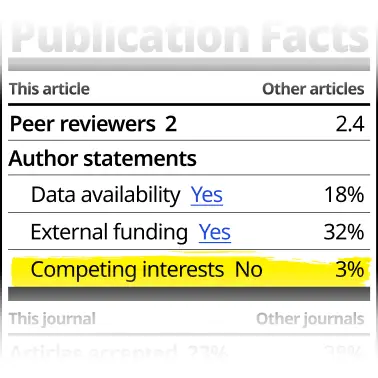
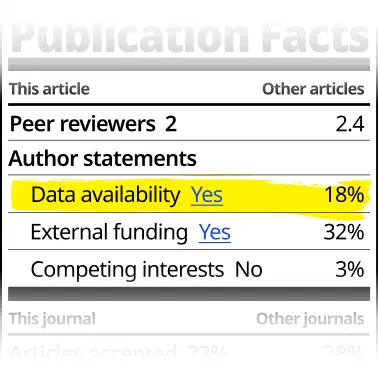
Data availability
Authors are encouraged to make the data they collect in the course of their study publicly available, so that others can review it, the study can be reproduced and/or the data can augment other studies.
- If authors respond “yes,” then clicking the link on “yes” will highlight the authors’ Data Availability Statement indicating where the data can be found.
- Sharing data may not be appropriate for all studies due to privacy, security and other issues.
- Under “other articles,” the percentage is for the proportion of articles declaring “yes” in journals using the PFL.
- “N/A” appears if the journal had not yet activated the “data availability” option when the article was submitted.
External funding
Authors are obliged to acknowledge any external financial support they’ve received to conduct their study, as making this known this is another protection of the work’s integrity.
- If authors respond “yes,” then the link on “yes” leads to the list of government, corporate, and/or private agencies that, after a review process that assesses the study, have supported related research expenses.
- Under “other articles,” the percentage is for the proportion of articles declaring “yes” in journals using the PFL.
- “N/A” appears if the journal had not yet activated the “external funding” option when the article was submitted.
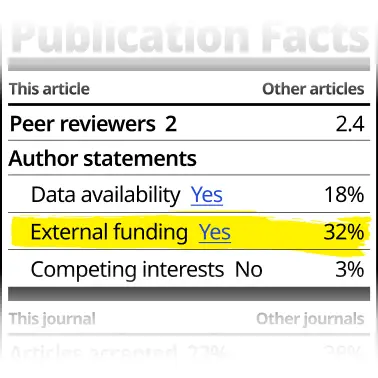
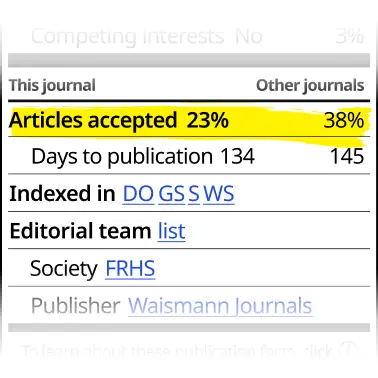
Articles accepted
This is the percentage of articles selected for publication by the editors from among those submitted to the journal, following peer review and the authors’ revisions.
Editors typically decline articles for reasons related to a lack of fit with the journal, the study’s originality, and research quality.
Indexing
Indexes search out journals to include in their database and/or accept applications from journals and publishers to include in their database.
The PFL lists databases that index or list this journal, including both the standard indexes and those selected by the journal editor. The indexes identified on the label are each linked to the journal’s listing in the index. Below are the standard indexes with a link to their homepage.
- D Directory of Open Access Journals (open for readers)
- GS Google Scholar (open for readers)
- L Latindex (open for readers)
- M Medline (open for readers)
- S Scopus (requires subscription to view)
- WS Web of Science (requires subscription to view journals)
Not all indexes are appropriate for all journals. Latindex is for Latin American journals; Medline for the health sciences; while the other four are general indexes.

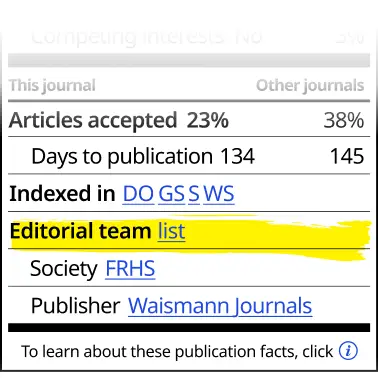
Editorial team list
The journal’s editors oversee the review process and select the articles to be published, as well as oversee their preparation for publication.
Editors are typically experienced, well-published researchers in their field, who have been selected by the publisher, board, and/or society.
The editorial board members, as selected by the editors or society, advise editors and publishers on research and publication matters.
The use of the profiles (as managed and verified by ORCID) on the masthead for reviewers and editors and editorial board members will be available with OJS version 3.5.
Society
Academic societies or associations sponsor journals to advance the research in their field of inquiry.
They appoint editors and board members to the journal based on their experience as researchers.
Societies allocate royalties earned from the journal to the society’s professional activities.
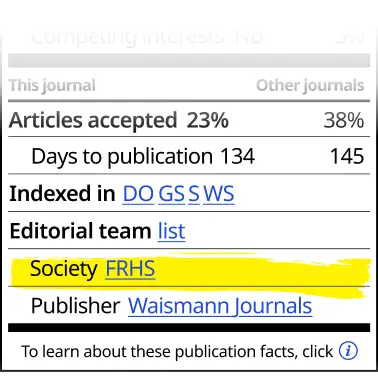
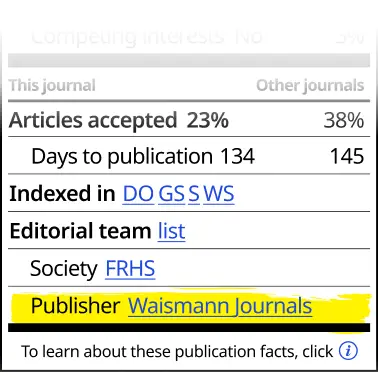
Publisher
The publisher is responsible for the journal’s management, editorship, production, publication, promotion, and indexing.
The publisher may have started the journal to meet the need for publications in an area of research, purchased the journal from another publisher, or publish it on behalf of a society.
The publisher may be a non-profit organization, a commercial operation, or part of an academic institution.
